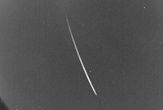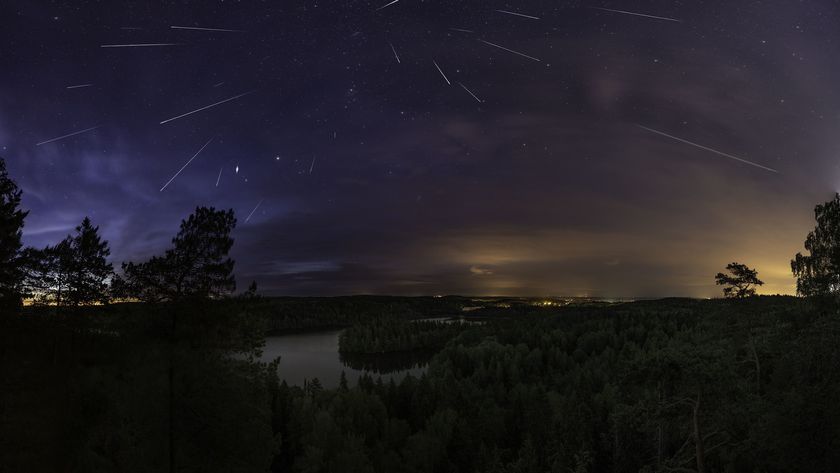Perseid Meteor Shower Unleashes Bright Fireball

The Perseid meteor shower is peaking this week and announced its annual August arrival with a bright fireball over Alabama, NASA officials say.
A small 1-inch (2.5-cm) wide meteor caused the fireball when it met a fiery demise Aug. 3 while streaking through Earth's atmosphere, according to officials at NASA's Marshall Space Flight Center in Huntsville, Ala. The fireball was observed by skywatching cameras operated by the space center. [Perseid meteor shower fireball photo.]
"It’s a very good start to this year's Perseid meteor shower, which will peak on the night of Aug. 12-13 between midnight and dawn," explained NASA spokesperson Janet Anderson in a statement from the space center.
The fireball occurred at about 9:56 p.m. local time and was low in the sky when it entered Earth's atmosphere about 70 miles (112.6 km) above the town of Paint Rock. It appeared about 9.5 degrees above the horizon. For comparison, your fist held at arm’s length is equal to roughly 10 degrees of the night sky.
NASA observations found the meteor to be hurtling through the atmosphere at a phenomenal 134,000 mph (215,652 kph).
"At such a tremendous velocity, the meteor cut a path some 65 miles [104.6 km] long, finally burning up 56 miles [90 km] above Macay Lake, just northeast of the town of Warrior," Anderson wrote. "The meteor was about six times brighter than the planet Venus and would be classified as a fireball by meteor scientists."
Because of its relatively low approach in the sky and its long, shallow path, the meteor qualified as a so-called Earth-grazing meteor, NASA officials said. Earth-grazing meteors are space rocks that enter the Earth's atmosphere at a low angle, from the point of view of a given skywatcher, and appear to scoot slowly and dramatically along the horizon.
Sign up for the Live Science daily newsletter now
Get the world’s most fascinating discoveries delivered straight to your inbox.
The Perseid meteor shower is an annual event that occurs in mid-August when Earth passes close to the orbit of the Comet Swift-Tuttle.
Material left behind by the comet rams into the Earth's atmosphere during the pass at about 37 miles per second (60 km/second), creating a regular show of "shooting stars" that has become known as the Perseid meteor shower. Comet Swift-Tuttle was discovered in 1862 and most recently observed in 1992. It takes about 130 years to orbit the sun.
(This SPACE.com Perseid meteor shower viewing guide shows how to observe the event. This sky map shows where to look to see the meteor shower.)
SPACE.com skywatching columnist Joe Rao has said the 2010 Perseid meteor shower promises to be one to remember for skywatchers with clear skies. Under good conditions, skywatchers could see about one meteor per minute depending on observing conditions, he said in a recent column.
"The August Perseids are among the strongest of the readily observed annual meteor showers, and at maximum activity nominally yields 90 to 100 meteors per hour," Rao explained. "Anyone in a city or near bright suburban lights will see far fewer."

Tariq is the editor-in-chief of Live Science's sister site Space.com. He joined the team in 2001 as a staff writer, and later editor, focusing on human spaceflight, exploration and space science. Before joining Space.com, Tariq was a staff reporter for The Los Angeles Times, covering education and city beats in La Habra, Fullerton and Huntington Beach. He is also an Eagle Scout (yes, he has the Space Exploration merit badge) and went to Space Camp four times. He has journalism degrees from the University of Southern California and New York University.












